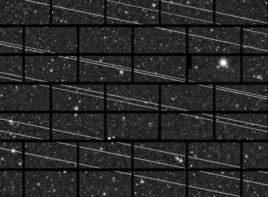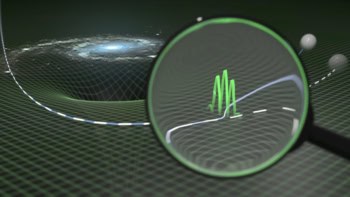Sunlight reflected into space by the Earth could help astronomers in the hunt for Earth-like planets orbiting distant stars. Neville Woolf of the University of Arizona and co-workers have shown that this reflected light – as it would be seen by an observer outside our solar system – contains clues about the atmosphere, terrain and life on Earth. They hope that their discovery will help astronomers to interpret the spectra of extrasolar planets (N Woolf et al 2002 Astrophys. J. 574 430).
To date, astronomers have discovered over 100 extrasolar-planets – that is, planets beyond our own solar system. Most of these planets were detected from the effects of their gravity on the motion of their parent stars, but at least one extrasolar planet has been spotted by detecting the starlight reflected from its surface.
This technique is tricky because the light reflected from such a planet is usually obscured by the glare of the parent star. But as observation techniques continue to improve, more extrasolar planets are likely to be detected in this way. Now Woolf’s team has paved the way for interpreting the spectra of visible light gathered from such planets.
Using the Steward Observatory 2.3-metre telescope at Kitt Peak in Arizona, the researchers analysed moonlight and ‘earthshine’. This is sunlight that is reflected from the Earth onto the dim portion of the Moon’s disk, and then reflected back towards Earth.
By combining the spectra of the earthshine and the sunlight reflected directly by the Moon, Woolf and colleagues produced a spectrum similar to the one that would be seen by a distant observer who could not resolve the Earth and the Moon. This is equivalent to how we would see an extrasolar planet.
The strongest signals in this spectrum arose from the ozone, water vapour and molecular oxygen present in clouds and the atmosphere. But the spectrum also revealed the existence of oceans, the phytoplankton that they contain, and land covered with vegetation. This means that an observer in a nearby stellar system could detect evidence of life from the sunlight reflected from Earth.
The researchers hope that their discovery will help astronomers to establish the properties of extrasolar planets from the visible light they reflect. They say that their study could be refined by observations of earthshine from space – which would not need to subtract the effects of the atmosphere – and longer-term studies that would account for fluctuations in the spectra.



